We are fabricator of Vacuum Furnace parts / sub-assemblies-mold chamber, melt chamber Pressure vessels ( As per ASME Sect. VIII ) / Autoclaves Shell & tube type Heat Exchangers Any other specialized fabricated equipment as per customer’s design Single Piece weighing 56 T & Assembly weighing 100 T ant and also Pressure Vessel Fabrication, Shell & Tube Heat Exchangers, Storage Tanks, Process Equipment, Furnaces, Fabricated Equipments etc.

What is Metal Fabrication ?
Metal fabrication is the process of building machines and structures from raw metal materials. The process includes cutting, burning, welding, machining, forming, and assembly to create the final product.
Metal fabrication projects include everything from hand railings to heavy equipment and machinery. Specific subsectors include cutlery and hand tools; architectural and structural metals; hardware manufacturing; spring and wire manufacturing; screw, nut, and bolt manufacturing; and forging and stamping.
The main benefit of metal fabrication shops is the centralization of these many processes that are often required to be performed in parallel via a collection of vendors. A one-stop metal fabrication shop helps contractors limit their need to work with multiple vendors to complete complicated projects.





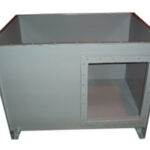
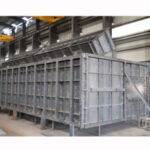
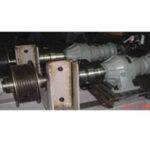

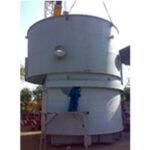
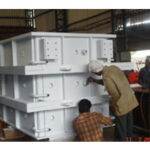
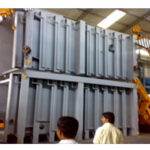



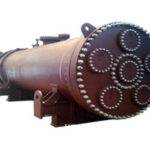
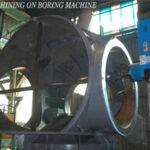
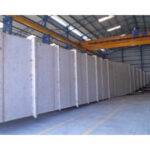

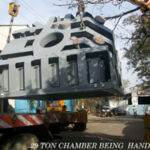
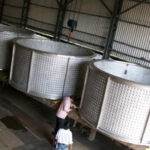
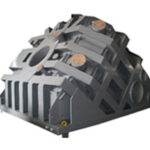



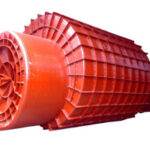
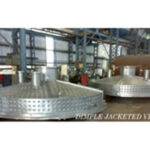

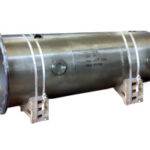

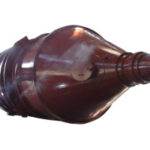
How Is Metal Fabrication Performed?
Metal fabrication industry has broad applications across a great many industries and consumer products. Standard raw materials used include plate metal, fittings, castings, formed and expanded metal, sectional metal, flat metal, and welding wire.
Shops employ many different experts, including welders, ironworkers, blacksmiths, boilermakers, and similar professionals that work with these raw materials and convert them into their final products.
According to the Bureau of Labor Statistics, approximately 1.425 million workers are employed in metal fabrication. Among them are cutting, punching, and press machine setters and operators; first-line supervisors; managers; machinists; team assemblers; welders, cutters, solderers, and brazers.
Let’s look at the types of fabrication processes in greater detail here:
- Cutting.
There are many ways to cut nowadays. The old standby is the saw. Others now include plasma torches, water jets, and lasers. There is a wide range of complexity and price, with some machines costing in the millions. - Folding.
Some parts need to be bent. The most common method is a press brake (or brake press). It has a set of dies that pinches the metal to form a crease. This operation can only be performed in very specific cases due to the movement of the part and the possible shape of the dies. Designing for Lean manufacturing, though, can help prevent complex shapes that slow down production. Sometimes using two different types of fabrication processes or two different pieces fastened together work better than one complicated piece. - Machining.
This is the process of removing metal from a piece of material. It might be done on a lathe, where the material rotates against a cutting tool, or in some other cutting machine where a rotating tool is moved in a variety of ways against a stationary piece. Drills fall into this latter category. The range of motion of the cutting head is defined by the number of axes (i.e. a 3-axis machine). - Punching.
Punching is the act of a punch and a die forming a ‘scissor’ effect on a piece of metal to make a hole in it. Obviously, the punch and die must be the same shape and size of the desired hole. In some cases, the main piece of material is kept, as in when holes are added for fasteners. In other cases, the piece that is removed is the desired product-this is called ‘blanking’. - Shearing.
Shearing is the process of making a long cut on a piece of metal. It is, in effect, just like the action of one of those paper cutters with the long chop-handle. This is done on sheet metal. - Stamping.
Stamping is very similar to punching, except the material is not cut. The die is shaped to make a raised portion of material rather than penetrating. - Welding.
Welding is the act of joining two pieces of metal together. A variety of types of welding exist for use in different applications and for the range of metals used in manufacturing.
- Cutting.
Fabricated Metals Used in Product Making
Forming metal pieces for assembly use is just part of the process when it comes to making metal products. The next stage involves taking different pre-made parts and turning them into machines, appliances, cookware, and other products. Depending on the operations at hand, a given set of assembly parts might go to a factory or independent craftsperson. In most cases, a project will start with one or more of the following materials:
- Expanded metal. For machines and fixtures needing metal panels that are grated instead of solid, metal is expanded to take on the desired consistency. Basically, sheets of metal are sheared in a pattern that forms diamond-shaped holes along the surface, which is held together by the remaining mesh-like metal. As the final formation of each sheet takes place, the metal is effectively expanded to its ultimate dimensions.
Expanded metal is commonly used as a protective wall on machines that need ventilation, such as along back-portion panels of computers and heaters. Panels of expanded metal are also commonplace on the fences and screen doors of condominium complexes and gated communities. The grating size on different sheets of expanded metal may vary, though wider holes are generally favored as a fencing material, and smaller holes are often better for panels on electronics equipment. Expanded metal is also available in a variety of thicknesses. - Sectional metals. In the construction and engineering sectors, metals are regularly ordered in sectional varieties for numerous applications. Sectional metal is any type of prefabricated piece that’s designed for standardized assembly. A construction company, for example, could need structural framing panels of particular lengths and widths, the measurements of which would be standardized throughout the industry and pre-fabricated for order from a construction-parts supplier. Common types of sectional materials include: a) I-beam. An I-shaped, cross-sectional beam. b) Z-shape. A sectional piece shaped similarly to the last letter in the alphabet. c) Bar. A rectangular cross-sectional metal piece. d) Rod. A long sectional metal piece, either square or round.
- Flat metal. For any given number of applications, flat metal pieces are used in construction and industrial assemblies. Flat metal is a raw material that is fabricated in a range of thicknesses. While the pieces are generally thin, the gauge will range from under a millimeter to two or more centimeters. Flat metals typically fall into three groupings: a) Leaf metal. The thinnest kind, also known as foil metal. b) Sheet metal. The most widespread kind, which tends to be under 6mm thick. c) Plate metal. The thickest kind, which exceeds 0.25 inches.
- Welding wire. Used as a welding aid, the wire consists of metal strands, which are typically bound together into thicker cords and sold on spools. True to its name, the wire is used to hold two pieces of metal together during a welding application. Usually, the wire is melted into the welded piece by the heat of the application as the process takes places. Welding wire is made of various types of metal, and it is generally found in a range of thicknesses.
- Expanded metal. For machines and fixtures needing metal panels that are grated instead of solid, metal is expanded to take on the desired consistency. Basically, sheets of metal are sheared in a pattern that forms diamond-shaped holes along the surface, which is held together by the remaining mesh-like metal. As the final formation of each sheet takes place, the metal is effectively expanded to its ultimate dimensions.
We are World Wide Service Provider.
We Manufacturer, Fabricator, supplier and exporter of Pipe Sleeves, Spools, Clamps, Cast blast & Pipe Risers in MIDDLE EAST: Saudi, Arabia, Iran, Iraq, Uae, Qatar, Bahrain, Oman, Kuwait, Yemen, Syria, Jordan, Cyprus, AFRICA: Nigeria, Algeria, Angola, South Africa, Libya, Egypt, Sudan, Equatorial Guinea, The Republic Of Congo, Gabon, Tunisia, Sudan, Uganda, Ghana, Senegal, Liberia, NORTH AMERICA: Usa, Canada, Mexico, Panama, Costa Rica, Puerto Rica, Trinidad And Tobago, Jamaica, Bahamas, Denmark, EUROPE: Russia, Norway, Germany, France, Italy, Uk, Spain, Ukraine, Netherland, Belgium, Greece, Czech Republic, Portugal, Hungary, Albania, Austria, Switzerland, Slovakia, Finland, Ireland, Croatia, Slovenia, Malta, Bulgaria, Turkey, Montenegro, Romania, Azerbaijan, Czech Republic, ASIA: India, Singapore, Malaysia, Indonesia, Thailand, Vietnam, South Korea, Japan, Sri Lanka, Maldives, Bangladesh, Mayanmar, Taiwan, Cambodia, SOUTH AMERICA: Argentina, Bolivia, Brazil, Chile, Venezuela, Colombia, Ecuador, Guyana, Paraguay, Uruguay, Peru
